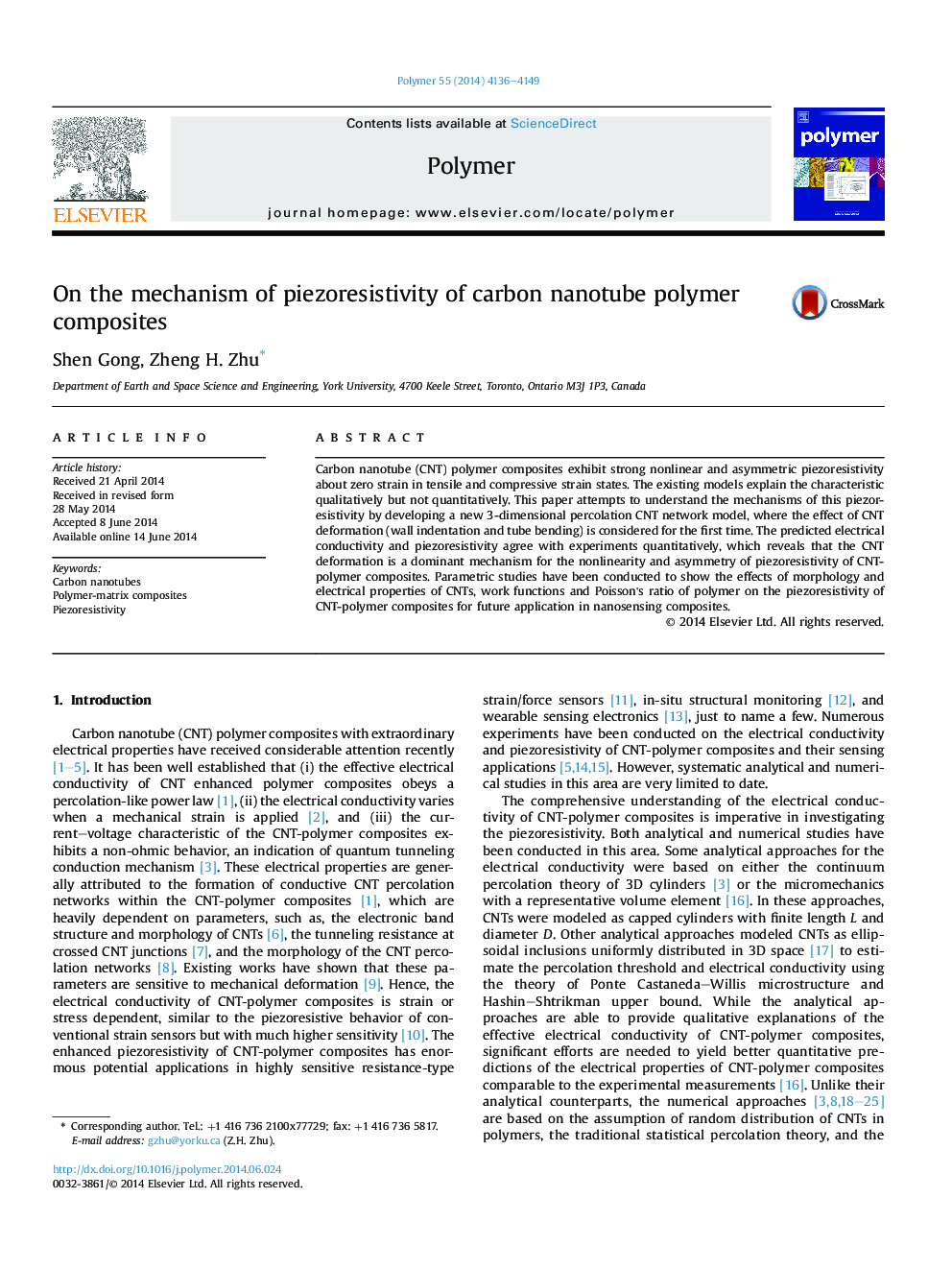| Article ID | Journal | Published Year | Pages | File Type |
|---|---|---|---|---|
| 5181223 | Polymer | 2014 | 14 Pages |
â¢The mechanisms of piezoresistivity of CNT-polymer composites are studied by tunneling theory and Landauer-Büttiker formula.â¢The CNT deformation is found as a dominant mechanism for nonlinearity and asymmetry of piezoresistivity of the composites.â¢Effects of morphology and electrical properties of CNTs, work functions and Poisson's ratio of polymer on piezoresistivity are studied.
Carbon nanotube (CNT) polymer composites exhibit strong nonlinear and asymmetric piezoresistivity about zero strain in tensile and compressive strain states. The existing models explain the characteristic qualitatively but not quantitatively. This paper attempts to understand the mechanisms of this piezoresistivity by developing a new 3-dimensional percolation CNT network model, where the effect of CNT deformation (wall indentation and tube bending) is considered for the first time. The predicted electrical conductivity and piezoresistivity agree with experiments quantitatively, which reveals that the CNT deformation is a dominant mechanism for the nonlinearity and asymmetry of piezoresistivity of CNT-polymer composites. Parametric studies have been conducted to show the effects of morphology and electrical properties of CNTs, work functions and Poisson's ratio of polymer on the piezoresistivity of CNT-polymer composites for future application in nanosensing composites.
Graphical abstractDownload high-res image (264KB)Download full-size image
